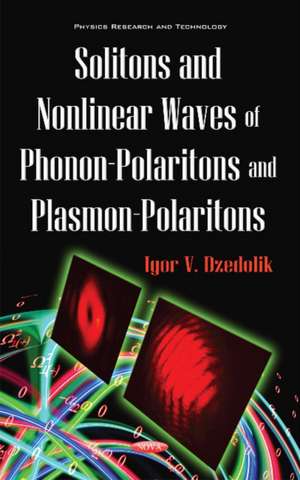Solitons & Nonlinear Waves of Phonon-Polaritons & Plasmon-Polaritons
Autor Igor V Dzedoliken Limba Engleză Hardback – 2016
Preț: 841.48 lei
Preț vechi: 1080.01 lei
-22% Nou
Puncte Express: 1262
Preț estimativ în valută:
161.07€ • 175.01$ • 135.38£
161.07€ • 175.01$ • 135.38£
Carte disponibilă
Livrare economică 31 martie-14 aprilie
Preluare comenzi: 021 569.72.76
Specificații
ISBN-13: 9781634842532
ISBN-10: 1634842537
Pagini: 130
Dimensiuni: 155 x 230 mm
Greutate: 0.39 kg
Editura: Nova Science Publishers Inc
Colecția Nova Science Publishers Inc
ISBN-10: 1634842537
Pagini: 130
Dimensiuni: 155 x 230 mm
Greutate: 0.39 kg
Editura: Nova Science Publishers Inc
Colecția Nova Science Publishers Inc
Cuprins
Preface; Introduction; Phonon-Polariton Spectra in Linear & Nonlinear Media; Nonlinear Scalar and Vector Polariton Waves; Properties of Nonlinear Polaritons in Dielectric Media; Surface Plasmon-Polaritons; Appendices; References; Index.











